Top 5 No Code LLM AI Tools for Building LLM Applications

Teams across industries—from marketing to finance—seek new ways to leverage AI, and no code LLM AI platforms eliminate technical roadblocks. These no code solutions empower teams to create LLM-driven applications in minutes, no developer required. They let non-technical users design, test, and launch powerful language-model apps with visual interfaces and plain-language prompts.
Next, we explain why these tools matter, how we chose them, and what distinguishes the top five.
What is No Code LLM AI?
When no-code development meets large language models (LLMs), users can link tasks—document ingestion, vector indexing, prompt chaining, user chat—without typing a single line of code.
No-code development refers to building applications with visual blocks instead of hand-coding.
Retrieval-augmented generation (RAG) fetches relevant context before an LLM crafts its response, boosting accuracy and relevance.
Next, we review the criteria that guided our selection.
Selection criteria for no code llm ai tools
To pick the top platforms, we applied six key criteria:
- Ease of use
Look for drag-and-drop editors, clear workflows and ready-made templates that tame the learning curve. - Model and data integration
Support for major LLM providers (OpenAI, Cohere, Hugging Face) plus connectors to PDFs, Google Drive, databases and more. - Customization and orchestration
Flexible prompt settings, context management, multi-model chains and RAG pipelines. - Deployment options
Cloud-hosted, on-premise or hybrid; APIs, web embeds and event triggers (Slack, Discord). - Security & compliance
SOC2, HIPAA, GDPR certifications; role-based permissions and audit logs. - Observability & analytics
Real-time dashboards, error tracking, usage metrics and full execution traces for debugging.
With these standards in place, let’s meet the leading tools.
PromptLayer
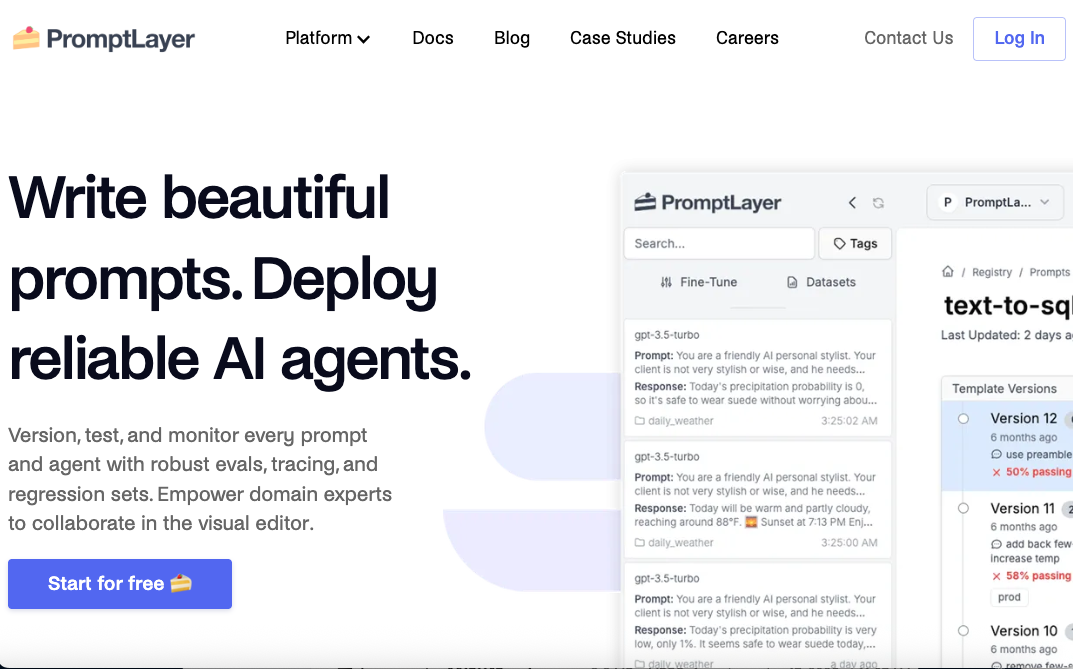
Serving as middleware, PromptLayer sits between your app and OpenAI’s API, logging each GPT request while offering a code-free prompt registry. Experts design, version and test prompts entirely through drag-and-drop—no code needed; then they monitor performance analytics in real time.
- No-code visual prompt registry
Create, edit and version prompts with a few clicks. - Need to test variations?
A/B testing and regression sets catch unintended behavior shifts before production. - Observability & monitoring
Track latency, token consumption and error rates in one unified dashboard. - Evaluation pipelines
Combine manual reviews and automated checks to keep response quality high. - Governance features
Shared workspaces, role-based permissions and audit trails ensure compliance.
Beyond core features, it integrates with LangChain callbacks, publishes advanced workflow guides and offers tutorials on migrating prompts to open-source models like Mistral.
LLMStack
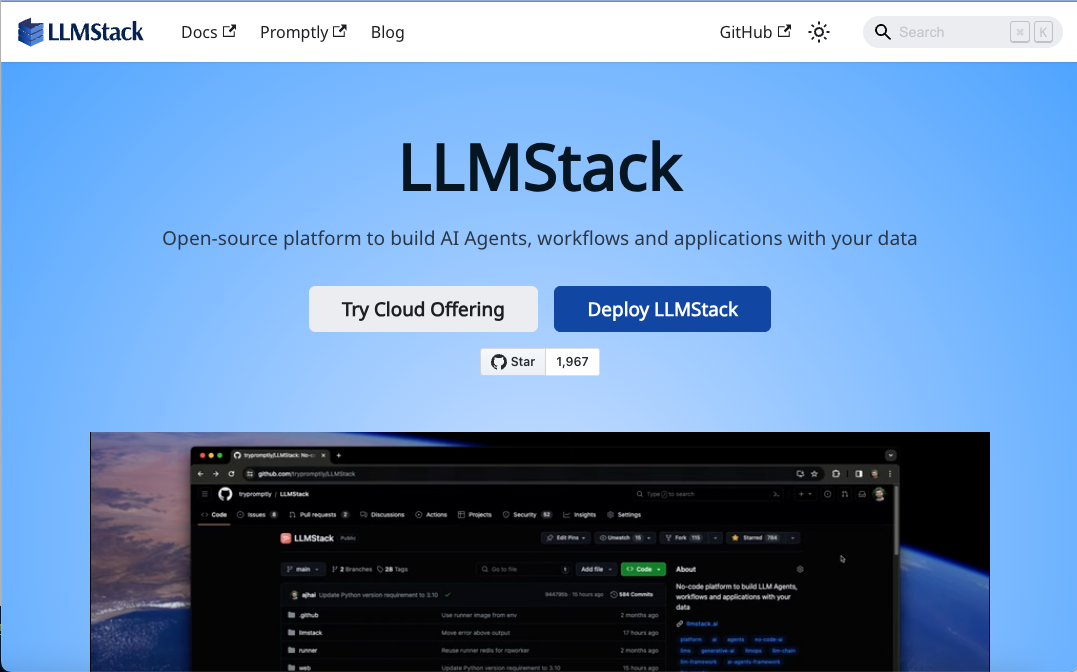
Built on React, LLMStack lets teams chain multiple LLMs and compare outputs side by side. Collaboration happens in real time, and deployment options span HTTP endpoints, embedded widgets or Slack/Discord triggers.
- Model chaining & comparison
Route requests through different LLMs, weigh results and pick the best output. - Need multiple data types?
Ingest web URLs, sitemaps, PDFs, audio files, PowerPoints, Notion pages and more. - Collaborative workspace
Version history, team permissions and live editing ensure everyone stays in sync. - Flexible deployment
Expose REST APIs or embed chat widgets with minimal effort.
As an open-source project on GitHub, it balances community innovation with enterprise reliability.
Dify
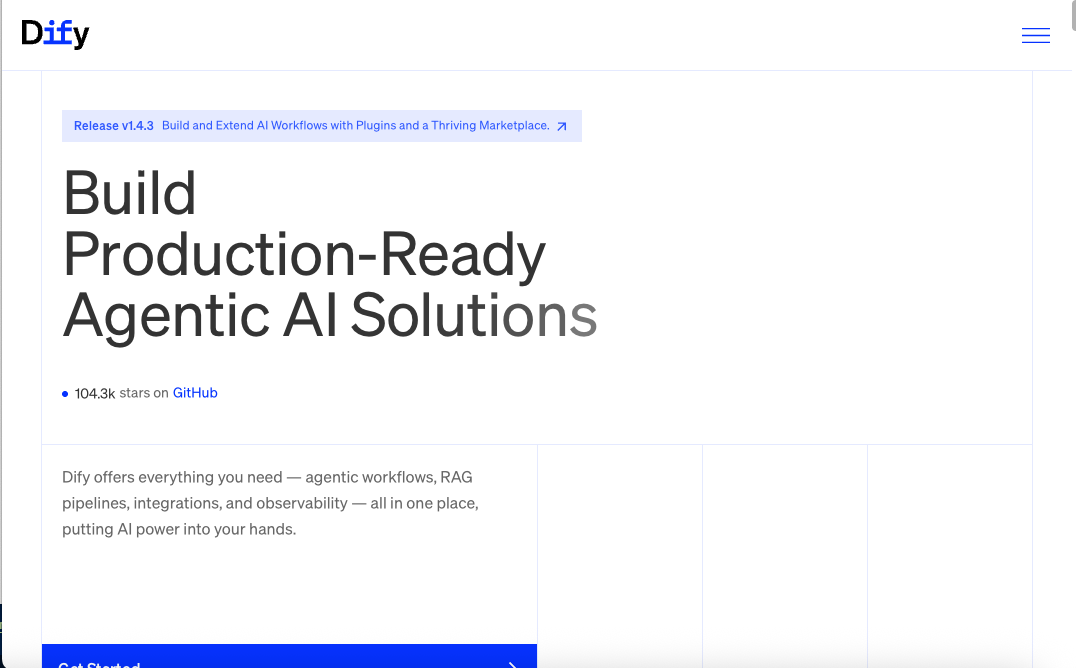
Combining a back-end service and visual RAG pipelines, Dify suits teams that want complete AI operations without infrastructure setup.
- Pipeline builder
Drag and drop steps—ingest, transform, index then query—until the flow makes sense. - Multi-model support
Use GPT, Llama2, Qwen or any other open-source or proprietary engine. - Agent framework
Build chatbots, workflows or automation scripts all in one interface. - One-click deployment
Turn your pipeline into APIs, chat widgets or internal dashboards instantly.
Dify’s thorough documentation and code samples ease the learning curve for newcomers.
Chatbase
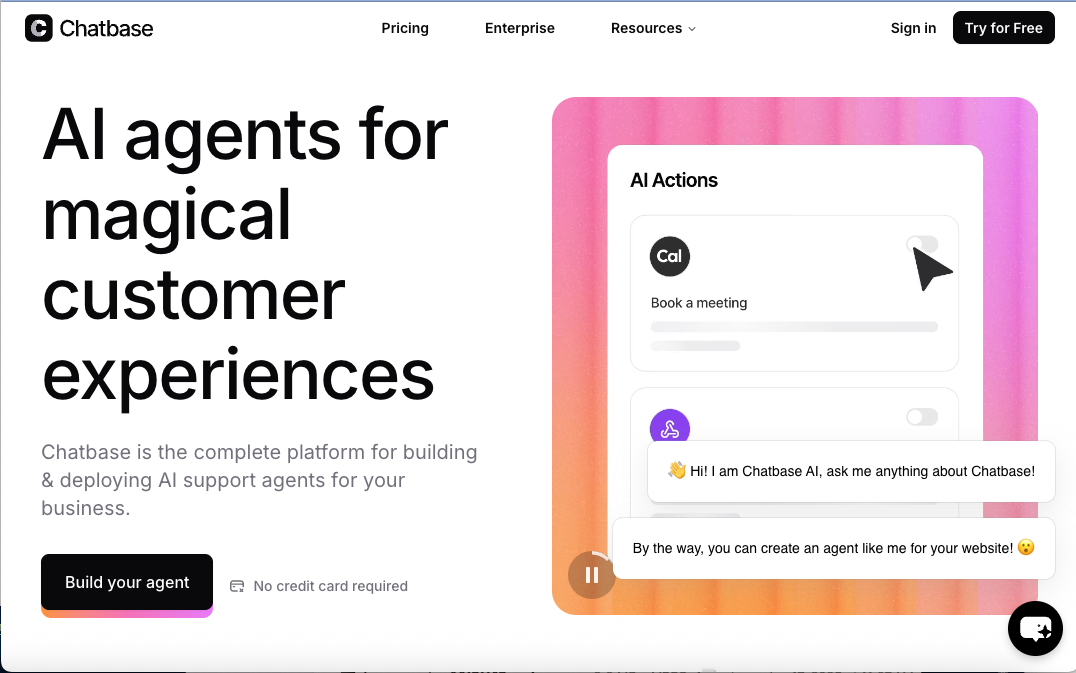
Enterprises that require real-time RAG and tight security often choose Chatbase. Its sleek UI hides robust controls.
- Training data manager
Upload documents, URLs and datasets; tag and organize for fast retrieval. - Interactive playground
Tweak prompt parameters and simulate user queries on the spot. - Access controls
Role-based permissions, single sign-on and complete audit logs. - Analytics dashboard
See usage trends, latency spikes and error alerts in real time.
With these features, Chatbase powers customer-support bots, knowledge-base assistants and sales accelerators.
StackAI
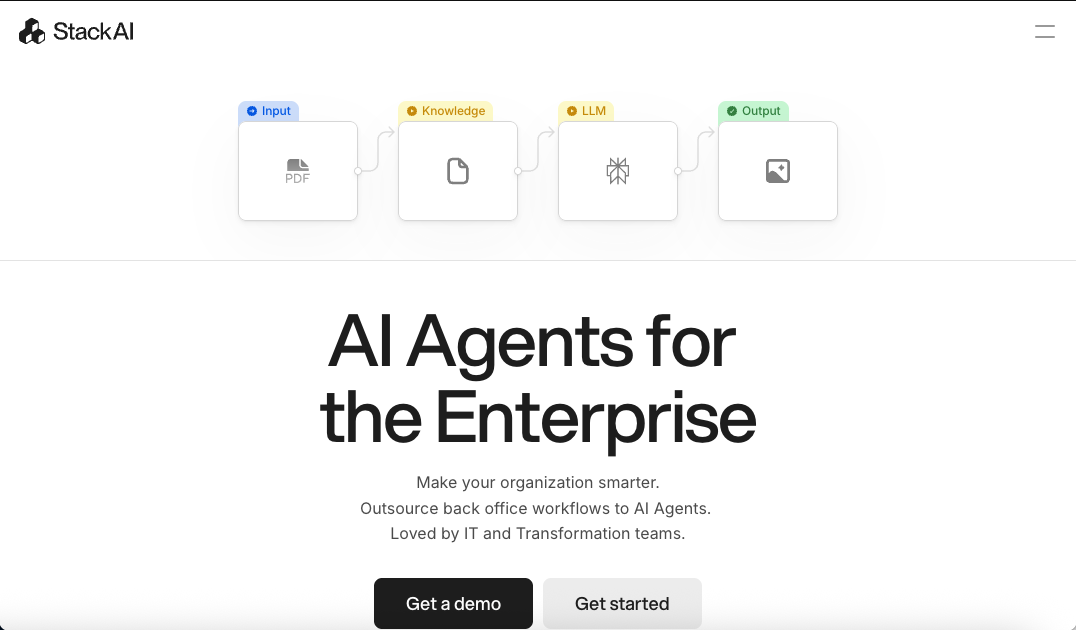
Backed by a $16 M Series A, StackAI focuses on automating back-office tasks with templates and data connectors.
- Workflow builder
Need to query Snowflake or update Salesforce? Drag actions into place. - Pre-built templates
Automate invoice processing, content tagging and report generation in minutes. - Security suite
SOC2, HIPAA and GDPR certifications; DPAs with leading AI vendors. - Deployment flexibility
Run agents in the cloud, on-premise or in hybrid setups.
Teams that handle sensitive data appreciate its governance features and private-cloud options.
Deployment and integration considerations
Align your choice with existing systems and policies:
- Cloud vs. on-premise: Host where data residency and compliance demands it.
- APIs and embeds: Confirm REST endpoints, SDK support or widget libraries.
- Connector library: Ensure native integrations with CRM, ERP or document stores.
- Monitoring needs: Look for detailed logs and end-to-end traces.
Security, compliance and governance
Protecting data and trust underpins every AI project:
- Certifications: SOC2, HIPAA and GDPR are non-negotiable for sensitive use cases.
- Access control: Granular roles, SSO support and audit logs guard against misuse.
- Data residency: Hybrid or on-premise deployments satisfy regional regulations.
Typical use cases
In everyday scenarios, these tools excel at:
- Customer support: Instant helpbots, ticket triage and guided assistance.
- Internal search: Contextual document Q&A for employees.
- Back-office automation: Data entry, report drafting and content tagging.
- Prototype labs: Fast experiments with multi-agent flows and RAG pipelines.
Conclusion
No code llm ai tools prove that coding skills aren’t required to build powerful LLM applications. Each platform—from PromptLayer’s prompt registry to StackAI’s enterprise workflows—serves a distinct purpose. Choose the tool that aligns with your security, integration and hosting needs, then empower your team to launch AI solutions today.
About PromptLayer
PromptLayer is a prompt management system that helps you iterate on prompts faster — further speeding up the development cycle! Use their prompt CMS to update a prompt, run evaluations, and deploy it to production in minutes. Check them out here. 🍰



